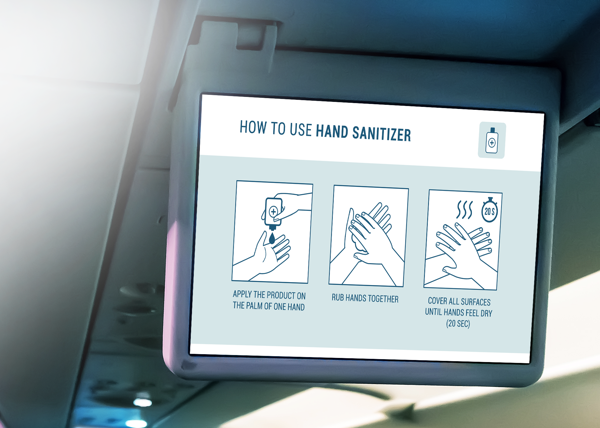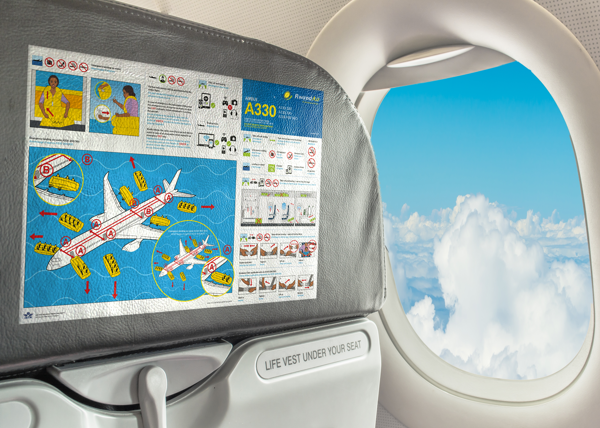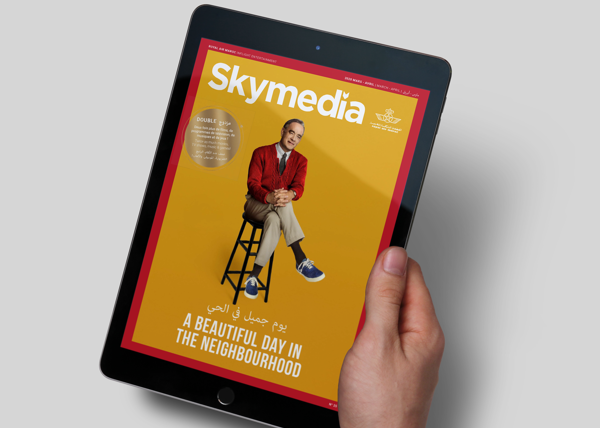Category: Blog
Why It’s Great: The Darjeeling Limited
Wes Anderson has made so many great movies, it’s inevitable that one of them would be a bit overlooked.
The Darjeeling Limited is that movie. And it’s a shame! Because it’s wonderful, and right up there with The Grand Budapest Hotel and The Royal Tenenbaums.
So. With The French Dispatch hitting inflight screens soon (can’t wait), it’s a good time to dust off this sort-of-forgotten-about gem.
Here are six reasons why The Darjeeling Limited is great.
The Cast
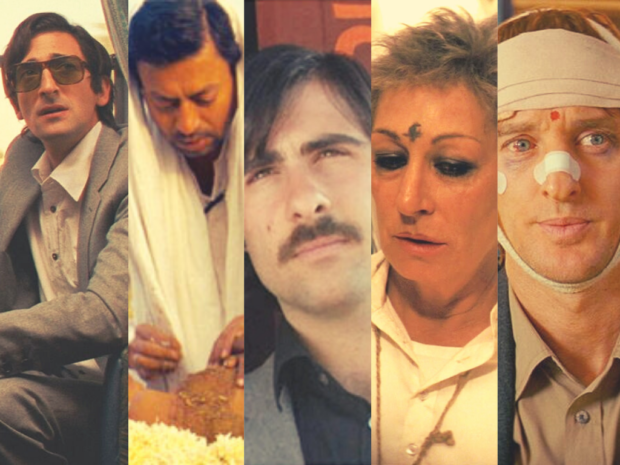
The Darjeeling Limited is about three brothers who, following their father’s death, take a train journey across India that (they hope) will provide healing, self-discovery and enlightenment.
The controlling elder brother, Francis, could be grating if played by the wrong actor: but Owen Wilson injects such sweetness and pathos into the role, that it’s hard not to like him.
Adrien Brody, meanwhile, brings a sensitivity to the icy and cynical Peter, while Jason Schartzmann plays Jack with a perfect combination of charm and world-weariness.
Anjelica Huston is as good as you’d expect as the brothers’ estranged mother, and celebrated (and sadly, recently deceased) Indian actor, Irrfan Khan, gives a standout performance as a bereaved father.
And yes, Bill Murray makes an appearance too.
As far as casting goes, it’s hard to fault the movie.
It’s a Real Tearjerker
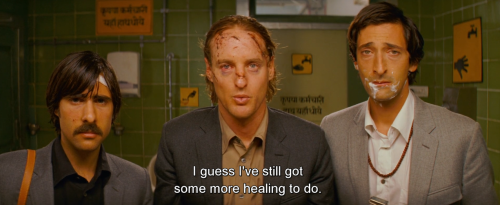
The Darjeeling Limited is one of Anderson’s most human and affecting films.
There are a number of moving moments, like the brothers’ reunion with their mother, or the death of the village boy. But the final scene is the best example (be warned – spoilers dead ahead!):
At this point, the brothers have accepted the loss of their father, and are ready to let him go. This is symbolised by how they leave their luggage behind as they jump on the departing train.
A simple metaphor, yes, but a powerful one too, and it makes for a wonderfully bittersweet conclusion.
Personally speaking, The Grand Budapest Hotel might be his most emotionally resonant movie, overall – that was something else. But Darjeeling is a close second.
India and its People
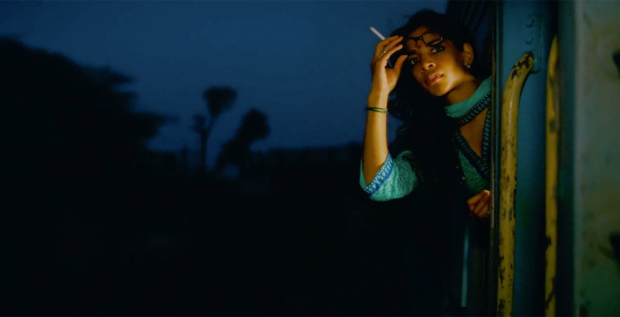
This was Wes Anderson speaking in a 2007 interview, and his affection for the country translates to the big screen.
Whether it’s a taxi ride through the crowded streets of Jodhpur, or a wide-angled shot atop the Udaipur mountains, or in the ornately decorated train, Anderson’s India is vibrant and stunning to look at.
But it’s not just the location. It’s the people, too.
From the large cast of local extras, to more prominent roles like Rita, The Chief Steward and The Father, almost every scene is teeming with interesting, and brilliantly performed, native characters.
Both of these elements, combined, create an India that’s authentic, complex and alive.
Visual Style

Extended tracking shots; symmetrical framing; meticulous set design; slo-mo; lavish costumes and whip pans. Just some of the stylistic signatures that have made Anderson one of Hollywood’s most distinctive directors.
All are present and correct in the movie, and they create an aesthetic that is both instantly recognisable and lovely to look at. Check out the below scene for some classic Anderson-isms:
We expect a high standard of visual loveliness from the director, and he doesn’t let us down in Darjeeling.
Brotherly Love
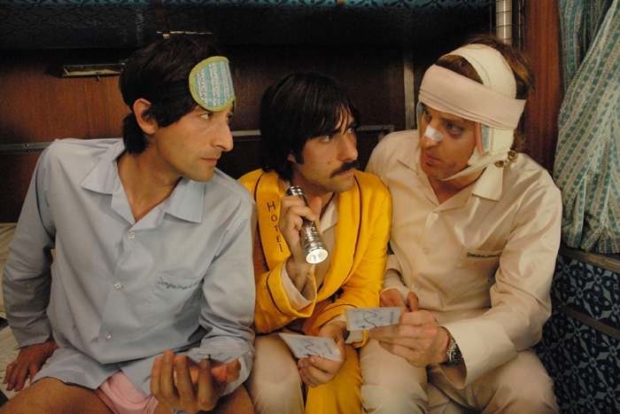
In this 2018 article, Marshall Shaffer writes how he “can’t think of a film that pinpoints the way brothers operated in a space together quite as accurately as The Darjeeling Limited“.
He’s absolutely right.
Brody, Wilson and Schartzmann mightn’t look like brothers, but they act like it. Take any given scene, and it’s all there: the bickering; the subtle jabs; the layered communication and the thrown fists.
But more importantly, and we see it more as the film progresses, is the love and affection that they have for one another.
Anderson has a gift for portraying dysfunctional and fractured families onscreen – The Royal Tenenbaums and Moonrise Kingdom are two fine examples.
But The Darjeeling Limited is where he did it best.
Humour
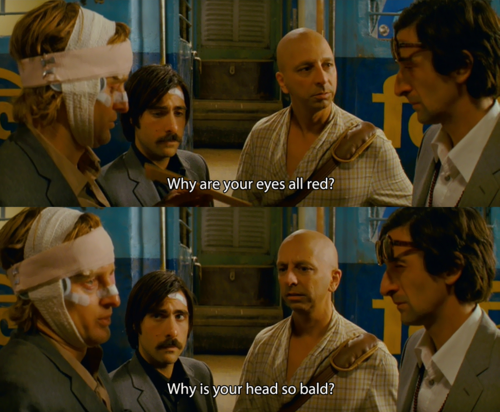
Comedy has always been an essential ingredient in Anderson’s movies, providing relief from their oftentimes sad and nostalgic themes. The Darjeeling Limited is no exception.
There are more than a few big laughs, but this is the biggest:
It’s a hilarious scene. The build-up to Francis and Peter wrestling on the ground is brilliantly done, and Jack’s line two minutes in (“I love you too, but I’m gonna mace you in the face!”) is one of my favourites.
Or how about this exchange between Peter and Jack. It’s the director at his deadpan best:
Jack: What did he say?
Peter: He said the train is lost.
Jack: How can a train be lost? It’s on rails.
Classic. How can you not love this film?
Written by Conor Regan.
At Inflight Dublin, we pride ourselves on providing the highest quality film, TV and audio content to our clients. If you’d like to learn how we can do the same for your airline, make sure to get in touch mail@inflightdublin.com
Further Reading
- “The Unpopular Opinion: The Darjeeling Limited is Wes Anderson’s Best Film” by Marshall Shaffer. Slashfilm.com.
- “Why The Darjeeling Limited is Wes Anderson’s Best Film” by Nathaniel Smith. Littlewhitelies.com.
- “The Darjeeling Limited – Film Review” by Philip French. Guardian.com.
Image Credits
- All images courtesy of 20th Century Fox. All rights reserved.
Inflight Dublin signs deal with YouTube sensation Dude Perfect
Inflight Dublin has announced an exclusive inflight content deal with Dude Perfect, American sport and comedy YouTube sensation.
The deal sees Inflight Dublin obtaining the distribution rights of Dude Perfect content on airlines for inflight entertainment, with their YouTube channel boasting an impressive 51 million followers and over 10 billion views. The exciting content targets sport and trick-shot lovers around the world, with their extensive catalogue of stunt videos and humorous skits, and new videos uploaded weekly to the platform.

“We are very excited about working with Inflight Dublin to bring our creative entertainment to the airline industry.”
Coby Cotton, Dude Perfect Co-Founder
The Texas-based group is known for collaborations with top global brands such as Oreo, Pringles and Gillette. The partnership with Inflight Dublin will bring Dude Perfect’s thrilling video content on-board the biggest airlines, a unique addition to traditional IFE content to enhance the passenger experience. Inflight Dublin specializes in creating bespoke content packages for airlines, providing innovative, on-trend content such as Viral, YouTube and Wellness videos.
Becoming The Boss: Bruce Springsteen’s “Born to Run”
Pre-Born to Run: 1973-1974
Given his popularity for the last four-plus decades, it’s strange to think of a time when Bruce Springsteen wasn’t The Boss.
But rewind back to 1974, and this was just the case.
He had just released two albums (Greetings from Asbury Park, N.J. and The Wild, the Innocent & the E Street Shuffle) that had underperformed commercially, and his label, Columbia Records, were losing confidence.
The third one would be make-or-break: he needed to deliver, and in a big way.
But, before he could get to work, there was a hurdle to get over first.
As a way of testing the waters, Columbia decided that they’d only fund a single, not an album. Get on the radio, and they’d put up for the new record. If not, Bruce was on the first Greyhound bus back to New Jersey.
Good thing, so, that the song he came up with was “Born to Run”.
The career-saving anthem didn’t come quickly – recording sessions dragged on for six months – but when the dust settled, Springsteen would have his first big hit, and, crucially, a label that was now on-board.
Next up was the album of the same name.
Line-up Changes and Recording Problems
Things got off to a rocky start when keyboardist David Sancious, and drummer Ernest “Boom” Carter, decided to leave the E-Street Band.
Both excellent musicians whose playing was central to “Born to Run”‘s frenzied sound, it was an unwelcome and untimely blow.
The search for replacements wasn’t without its difficulties, as Springsteen memorably described in his 2016 memoir:
Eventually, Max Weinberg and Roy Bittan, two veterans of the Broadway circuit, joined on drums and keyboard.
As replacements go, he couldn’t have chosen better. They’d bring a solidity and finesse to the music, and become longstanding members (both are still in the band to this day).
Bruce and the E-Street gang then decamped to The Record Plant to get to work.
The sessions were, understandably given the circumstances, long, stressful and intense.
Springsteen, despite labouring over every individual note and tempo change, was chronically dissatisfied and, as time went on, some started to question if the album would ever get completed.
But fast-approaching tour dates would force his hand. Scheduled to coincide with the album’s release, they provided a much-needed deadline: now, for better or worse, he needed to finish the job.
So, a few frantic studio sessions later, he decided to cut (what he thought were) his losses; Born to Run was released, at last, on August 25th, 1975.
The Album Drops
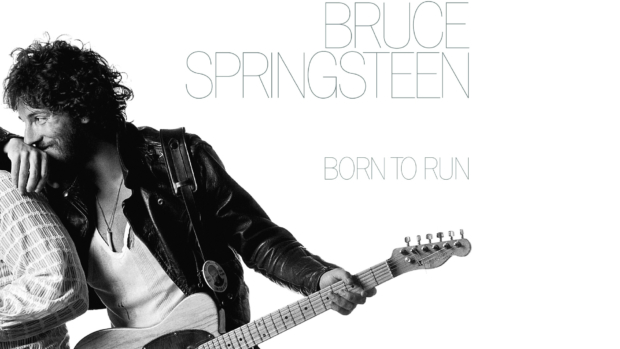
He needn’t have been so worried.
Born to Run quickly became a monster hit and would, in time, become recognised as one of the best rock albums of all time.
“Thunder Road” kicks it all off. Following a gentle intro of piano and harmonica, Bruce enters with one of his most iconic verses:
Screen door slams
Mary’s dress waves
Like a vision she dances across the porch
As the radio plays
The song gradually builds in intensity, until a Clarence Clemons’ sax solo, played over a deep half-time feel, brings things to a very theatrical, and very powerful, crescendo.
Is there a better opener to an album than “Thunder Road”? A thrilling introduction to the world of Born to Run and the characters that inhabit it, it’s just perfect.
“Tenth Avenue Freeze-Out” follows, and gives us a moment to catch our breath.
Held together by Weinberg’s rock solid backbeat, and elevated by Steve van Zandt’s horn arrangement, it’s a fun, laidback, loose number that draws on Springsteen’s love of Motown.
Quick aside – its 1975 performance at the Hammersmith Odeon is an absolute must-see:
“Night” is overlooked. A blur-collar anthem about frustration and escape, it’s energetic and catchy, and leads us nicely into the fantastic “Backstreets“.
The first of the album’s two epics, this is the discerning fan’s favourite. And with good reason: there’s a lot to love here, especially the raw and intense vocal. The impressionistic lyrics are excellent, too:
Catching rides to the outskirts
Tying faith between our teeth
Sleeping in that old abandoned beach house
Getting wasted in the heat
And then comes the one everyone knows, the one that made it all happen – the title track. It’s so familiar, but still so good: the opening drum fill; the tremolo guitar line; Garry Tallent’s driving and melodic bass; and of course, that hook:
‘Cause tramps like us
Baby, we were born to run
It’s his signature song for a reason.
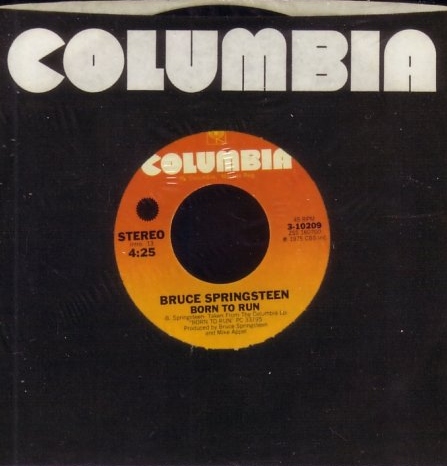
Influenced by Springsteen’s love of ’50’s rhythm and blues, “She’s the One“, is catchy and fun. Because of the ridiculous quality of the rest of the album, it’s the least essential track here – but that’s not to say it’s not great (which it is).
Tom Waits once said that he wished he wrote “Meeting Across the River“. It’s easy to understand why.
Over a sparse arrangement of piano, horn and upright bass, Springsteen spins an evocative yarn about two down-on-their-luck characters looking to score a deal. A haunting deep cut that, being more jazz than rock, highlights Springsteen’s (sometimes underappreciated) ability to bounce seamlessly between genres.
And last but certainly not least, we have “Jungleland“: the best track on the album, and many would say of the songwriter’s career (I’d say “Racing in the Street” personally, but it’s a close thing).
Opening with Suki Laha’s cinematic violin line, this nine-plus minute saga weaves through several movements before climaxing with a beautiful Clemons’ solo – his “greatest recorded moment”, according to Bruce himself.
Then, the song drawing to a close, Springsteen just howls; a stunning moment on an album that’s full of them.
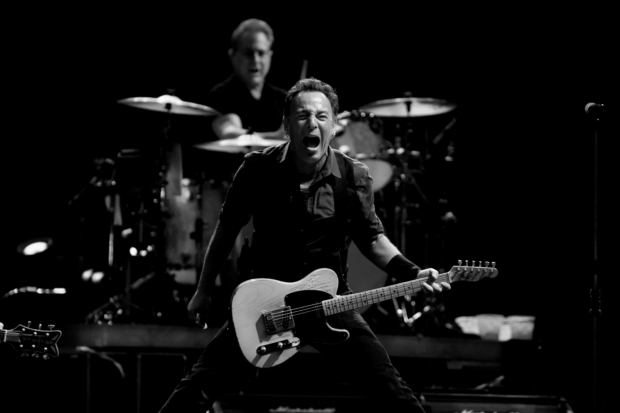
Becoming The Boss
Critically, the album was extremely well-received.
In Rolling Stone, Greil Marcus called it a “masterpiece” that “pays off on every bet ever placed on him”, and it was also voted third best album in the prestigious Village Voice annual poll.
It exceeded commercial expectations too. Peaking at number three in the Billboard charts, it would go triple platinum in 1986, and remains a reliable catalogue seller for Columbia to this day.
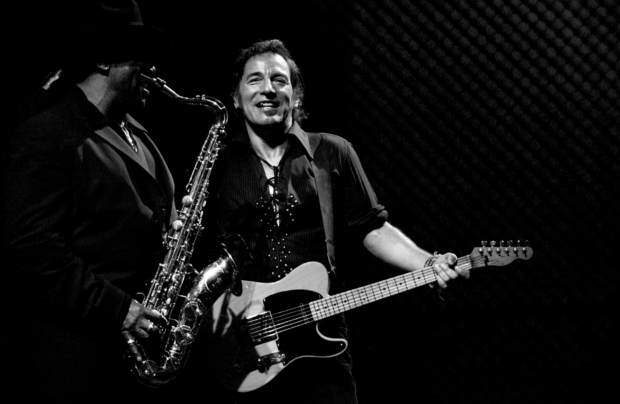
From here on out, the venues would only get bigger, and, by the end of 1975, Springsteen had made history by being on the cover of Time and Newsweek in the same week.
The struggling songwriter who couldn’t get on the radio, and was this close to being dropped, was no more.
In his place, stood the biggest, and most acclaimed, rock ‘n’ roller in the world.
Bruce Springsteen had become The Boss.
Written by Conor Regan.
At Inflight Dublin, we pride ourselves on providing the highest quality film, TV and audio content to our clients. If you’d like to learn how we can do the same for your airline, make sure to get in touch – you contact us here.
Image Credits (in descending order)
- Banner photo by Fabio Diena @ Shutterstock.com.
- The E-Street Band. Photo by Fabio Diena @ Shutterstock.com.
- Born to Run album cover. Photo by Eric Meola @ Colombia Records.
- Bruce Springsteen. Photo by Fabio Diena @ Shutterstock.com.
- Bruce Springsteen and Clarence Clemons. Photo by Fabio Diena @ Shutterstock.com.
'One-stop-shop' pre-flight and in-flight safety service
Inform and communicate hygiene and safety for passengers on-board.
Inflight Dublin, a global provider of inflight entertainment and wireless solutions, is providing a ‘one-stop-shop’ service package to support the enhanced pre-flight and in-flight safety protocols that will be implemented by airlines over the coming months.
The service package not only helps communicate important COVID-19 related messages to passengers in-flight, it also supports automated pre-flight temperature screening of passengers.
The communication services consist of Pre-Recorded Announcements (PRA’s) in any language, certified embedded Safety Cards, and Hygiene Guidance animated videos to help passengers clearly understand the new hygiene guidance and COVID-19 related protocols. Inflight Dublin’s in-house Design team can tailor all communication services to an airline’s brand guidelines and in-flight entertainment system specifications.
Inflight Dublin is partnering with Ventilux to bring the latest in safety technology to airlines, by offering a mass screening body temperature detection system using the latest sensor technology. The non-contact, non-invasive ITDS-200 offers real time intelligent identification and tracing of people with abnormal temperatures

“Hygiene and Safety are at the forefront of everyone’s mind in the aviation industry right now, and we need to adapt to support airlines as best as we can. Keeping pre-flight and in-flight protocols up to date in the current climate is very important, as well as minimising touchpoints and introducing new technologies to protect both passengers and crew. We are happy to help make the passenger experience as safe as possible”.
– John White, Inflight Dublin’s CEO.
Contact Us
Parasite: Status Set in Stone
Produced by Jamie Baker, Audio Services Lead.
At Inflight Dublin, we pride ourselves on providing the highest quality film, TV, and audio content to our clients. If you’d like to learn how we can do the same for your airline, please do get in touch by sending a message to mail@inflightdublin.com
International Film Round-Up
When Bong Joon-ho won the Golden Globe for Best Foreign Language Film, he opened his speech with this gem:
Once you overcome the one-inch tall barrier of subtitles, you will be introduced to so many more amazing films.
Wise words indeed.
Many of cinemas’ finest moments aren’t in English, so it’s fantastic to see the International market’s growth of the last few years.
So, in this spirit; here are five titles that I recommend you check out.
All are outstanding, and represent the best of International film.
Enjoy. 🙂
Pain & Glory (Spain)
Pedro Almodóvar’s 21st feature and his first since 2016’s excellent Julieta, Pain and Glory finds the celebrated Spanish director in a contemplative and reflective mood.
Starring long-time collaborative partner Antonio Banderas, the film focuses on ageing director Salvador Mallo as he navigates creative, physical, and existential crises.
Banderas is in top form in what many are calling a career-best performance. Very much worthy of his Best Actor win at Cannes and Oscar nomination for the same, those only familiar with his roles as brawny action heroes (and a certain sword-wielding CGI cat) are in for a welcome surprise.
The supporting cast, comprised of Penelope Cruz, Julieta Serrano, and Leonardo Sbaraglia, is just as impressive, and Alberto Iglesias’ unsettling and melancholic score complements it all perfectly.
A poignant look at growing older and how we come to terms with ourselves, Pain and Glory is a career-best work from the much-celebrated director.
Portrait of a Lady on Fire (France)
Portrait of a Lady on Fire has received a lot of praise for its visual style, and, with its sumptuous cinematography and stark set design, it’s easy to see why.
But it’s not just lovely to look at. A bittersweet romance about two star-crossed lovers, this period piece stays with you long after the credits have rolled.
Taking place in 18th century France, the film tells the story of Marianne, a young painter hired to paint Eloise’s portrait for her upcoming wedding.
However, because she’s a reluctant bride, Eloise is unwilling to commit herself to canvas, so Marianne is forced to paint her in secret. Soon enough, the artist falls for her subject.
As aesthetically pleasing as it is emotionally devastating, Portrait of a Lady on Fire is as David Ehrlich writes in his Indiewire review, “as perfect a film as any to have premiered this year.”
Parasite (South Korea)
Words like “masterpiece” get thrown around a lot, but it seems like the right one to use when describing Parasite.
Funny, unpredictable, thrilling, and moving while also providing a razor-sharp social commentary, this particular film merits the lavish praise that’s come it is way.
Recipient of the Palme D’Or (and an eight-minute standing ovation) at Cannes, it is also, as I’m sure you know, the first non-English film to win the Best Picture Oscar.
Hopefully the first of many.
It’s also had great success at the box office. Bringing in a worldwide total of $266.9 million it has, with ten million-plus admissions, also been seen by more than a fifth of its native South Korea’s population.
About two families at opposite ends of the class spectrum, the film centres around the impoverished Kims and the affluent Parks, and the twisted relationship that develops between them.
I’m going to leave it there though, because the less you know before diving in, the better. I strongly suggest you just do the sensible thing and watch it.
When Hitler Stole Pink Rabbit (Germany)
When I think of war films on the big screen, adult-only ones like Full Metal Jacket, Saving Private Ryan, Dunkirk, and 1917 come to mind.
However, there are others, like Grave of the Fireflies and The Boy in the Striped Pyjamas, that portray the problematic subject in a way that’s suitable for younger viewers.
When Hitler Stole Pink Rabbit, a German film based on the 1974 book of the same name, does this too – and quite brilliantly.
Told through the perspective of 9-year old Jewish girl Anna (a pitch-perfect performance from Riva Krymalowski), it tells the story of her and her family’s escape from Berlin, and subsequent experience as refugees.
This is an excellent adaptation. Tactful in its portrayal while never talking down to its younger audience, it’s a moving watch, and a powerful reminder of the devastating consequences of war.
Shoplifters (Japan)
Hirokazu Koreeda’s Shoplifters was one of the most highly acclaimed films of 2018, garnering critical praise and winning that year’s Palme d’Or.
The film is about a group of outsiders who engage in petty theft to make ends meet.
After one particular shoplifting run, two members of the gang, Osamu and his son Shota, come across a homeless girl in the cold who they decide to take in. They’re all quite content together – that is, until, an unforeseen incident tests the bonds that unite them.
Shoplifters is a touching and thought-provoking film.
It reminded me of the great Ken Loach in how it empathises with those who’ve fallen into poverty, and in the naturalistic, documentary-like way it depicts these lives onscreen.
Critic Robbie Collin nailed it when he calls it, in this review for the Telegraph, “compassionate, socially conscious filmmaking… that steals and snatches your heart”.
It sure does.
Written by Conor Regan, Senior Content Acquisition Executive.
At Inflight Dublin, we pride ourselves on providing the highest quality film, TV, and audio content to our clients. If you’d like to learn how we can do the same for your airline, please do get in touch by sending a message to mail@inflightdublin.com
The Music Biopic in 2020
Record-breaking returns, critical acclaim, packed screenings and loads of awards.
Yep, it’s fair to say that the music biopic has performed pretty impressively recently.
However, it wasn’t always the case.
Because, besides an occasional hit, the genre has historically brought in low to middling box office numbers; certainly nothing compared to traditional blockbuster bankers like action, comedy and drama.
So, what’s changed? What are the reasons for this shift to the mainstream, and why now?
Let’s take a look at a few reasons why.
Bohemian Rhapsody’s Breakthrough
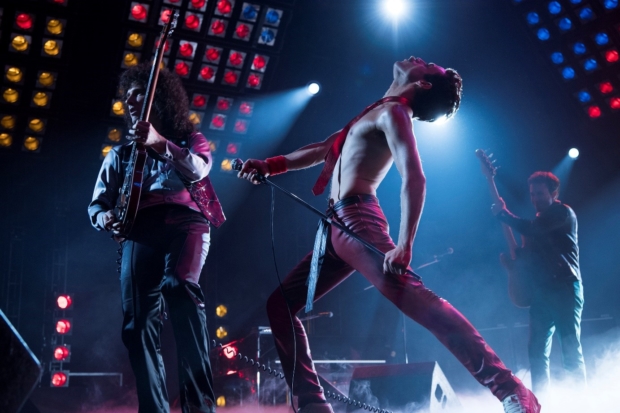
Sometimes a one-off success is needed to bring a style in from the margins, and this is precisely what Bohemian Rhapsody did for the music biopic.
Chronicling Queen’s career from their formation up to that Live Aid performance, it was the ideal introduction for those who knew little about the subgenre.
The numbers were remarkable. The 6th highest-grossing movie of 2018, its $900 million-plus return is especially noteworthy when you consider that Straight Outta Compton was, until then, the top-performing music movie with $201 million (almost $700 mill less!).
But the good news wasn’t just financial. The film won four Oscars as well as Best Motion Picture (Drama) at the Golden Globes, and, with a very respectable IMDb rating of 8.0, is well-liked from an audience perspective.
Such a total, on-all-fronts success was completely unexpected (it even took Brian May by surprise), and proved that the humble music biopic could compete at the box office, and beyond.
Music Streaming

It’s no coincidence that, as streaming has become the dominant model of music distribution and consumption, more music biopics have hit screens than ever before – but how are the two connected?
Well, on the one hand, now that listeners have vast libraries of music at their fingertips, musicians are, generally speaking, being heard by audiences that are more evenly spread across nationalities and generations.
An offshoot from this wider listenership is a heightened interest in the lives of the artists themselves, and the eras from which they came – elements that the music biopic is uniquely well-suited in depicting.
It’s inevitable, so, with the rise of music streaming, so too would there be an increased demand for them.
A downside of streaming though, from the perspectives of the artist and their labels at least, has been the decreased revenue from traditional models (album sales, for instance) – a factor that, as we’ll see in the next point, has also had an impact on the subgenre’s popularity.
Changing Attitudes to Rights

A sticking-point for biopic creators in the past has been the acquisition of an artist’s music and life rights.
The much-delayed Janis Joplin movie is the classic example, so infamous that it was the subject of a particularly excellent 30 Rock parody:
However, things are changing. With the losses felt by the industry due to streaming, artists and labels are becoming increasingly flexible and open, something which Dan Simpson sums up in this article:
But, as Simpson also points to in the same piece, the potential benefits of the biopic aren’t just financial:
Taking these shifts in music and media into account, it’s no wonder that we’re seeing the industry become more flexible when it comes to rights – which means, ultimately, more music movies.
We’ll get that Janis Joplin one yet.
Heightened Audience Appeal

Stories about the rise-and-fall (and rise again) of a character never seem to go out of fashion.
Whether it’s Rocky, It’s a Wonderful Life or The Shawshank Redemption, these type of movies have a universal quality that resonates with us all.
With the up-and-down nature of a life in the spotlight, famous musicians are a natural fit for this type of narrative arc, and Hollywood has recognised this – hence several recent biopics have been based around cosily familiar three-act structures that often conclude with the protagonist’s rebirth.
By shaping the movies like this, filmmakers have been able to tap into an established audience, and this has, in turn, helped push the subgenre to prominence.
Another recent trend has been to soften the biopics’ subjects, and present PG-13 versions of what are often R-rated lives – one example being Queen, whose rock ‘n’ roll lifestyle was toned down for any impressionable kids watching.
Since adult-only music films have historically had a rough time at the box office, the milder ratings of recent ones mean that they can reach a broader, and younger, audience.
In Conclusion!

The music biopic has been one of the major breakout genres of the last few years, and a combination of four factors go some way to explaining why: the enormous success of Bohemian Rhapsody; significant changes in music distribution; shifting attitudes to rights and licensing; and the creation of a more accessible batch of biopics.
Whether it has the staying power of other recent industry trends (superhero movies and remakes, for example) is anyone’s guess. Still, you can be sure that the music movie will be hitting inflight screens for another while at least.
Very welcome news, I’m sure you’ll agree, for music obsessives everywhere. 😉
Written by Conor Regan.
Inflight Dublin prides itself on providing the most current and on-trend film, TV, and audio content to our clients – and this includes music biopics! If you’d like to learn more about our company, and perhaps how we can do the same for your organisation, contact us at mail@inflightdublin.com
Further Reading
-
2020 movies: The best upcoming musical biopics this year, from Elvis to Bowie by Sian Hamer and Tom Eames.
-
Hollywood is hoping music biopics are their new golden ticket by Gregory Wakeman.
-
Rocketmen and stardust: why music biopics dominate the film industry by Dave Simpson.
-
The Year of the Musical Biopic by Katherine Schwartz.
-
Best Music Biopics: 30 Essential Films For Music Fans by Tim Peacock.
Image Credits (in descending order)
-
Bohemian Rhapsody. Photo: 20th Century Fox.
-
Music Streaming. Photo: Unknown @ Canva.com.
-
Cinema Audience. Photo: mail272 @ Canva.com.
-
Lightbulb: Photo : TeroVesalainen @ Pixabay.
Inflight Dublin Statement on COVID-19
Responding to the crisis
Inflight Dublin is closely monitoring the COVID-19 situation around the world and are taking the necessary actions to ensure compliance with all government and professional medical advice. The health and well-being of our staff and clients is our top priority during this time, with all staff working safely from home and all work-related travel suspended for the duration of this crisis.
Our business is operating as usual, with all staff utilising remote access to our IT systems and infrastructure. These facilities are robust, secure and have been tested. This will enable us to continue operating in a seamless manner so that there is no change in our high service levels.
Support, empathy and understanding are key elements in our approach to this difficult situation and we welcome our clients, partners and industry professionals alike to reach out to us with any questions they may have regarding our operations at this time.
Continuous updates will be provided on our LinkedIn and Twitter channels.
Contact us: mail@inflightdublin
Inflight Dublin Launches EASE: Wellness Breathing Exercise
Inflight Dublin, a global provider of inflight entertainment and wireless solutions, has announced the launch of their latest product innovation, EASE: Wellness Breathing Exercise. The release of the wellness product aims to promote the wellbeing of passengers, in the air or on the ground, particularly during these difficult times.

EASE is a user-centred, brand-aligned breathing exercise that helps anxious travellers feel more relaxed during their flight. Compatible with all inflight entertainment systems, the exercise can be housed on any Wireless or Seatback IFE platform. Adopting binaural beats (Audio Frequencies), resonant breathing techniques, and comforting visuals, the goal of the video is to instil a calming and positive experience for the user throughout their flight.
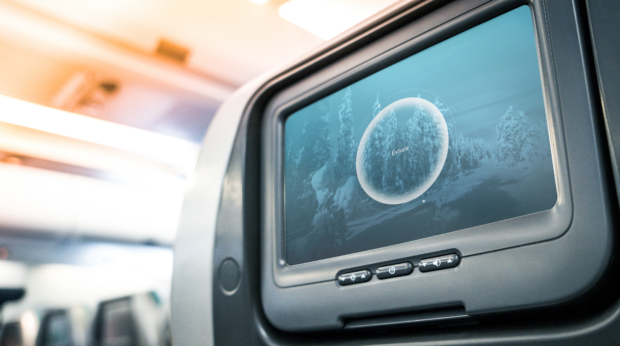
EASE is fully customisable and through the complementary application of an airline’s logo, colour palette, and typography the exercise will tastefully reflect each airline’s brand. This on-trend and extremely helpful product is designed and managed entirely in-house by Inflight Dublin.
“We are delighted to announce our latest innovation, EASE: Wellness Breathing Exercise. Recognising the fast-growing wellness trend, we wanted to create something simple and user-friendly that would help ‘ease’ the anxiety or fear that many passengers suffer when flying. I am proud of the Inflight Dublin team for continuing to innovate and creating something positive during such a tough time for the industry” – John White, Inflight Dublin’s CEO.
Privilege Style selects Inflight Dublin for the provision of Wireless IFE Software and Content
Privilege Style has agreed a 5 year contract with Inflight Dublin for the provision of its Everhub™ wireless IFE software and content.
The partnership with Inflight Dublin will significantly enhance Privilege Style’s passenger experience with an extensive selection of the most recent and innovative content available. The content inventory will include something for every passenger with Hollywood blockbusters, Hollywood classics, TV show episodes, and kids programmes available to passengers.

Inflight Dublin’s wireless solution Everhub™ will provide a fully customizable software platform that will reflect Privilege Style’s brand and GUI design requirements. Everhub™ is equipped with Hollywood approved DRM for Early Window movies and is compatible with all Android, iOS and Windows devices. Other features will include a moving map. The wireless IFE software and content provided by Inflight Dublin will be available across Privilege Style’s entire fleet.
“We are thrilled to have secured a 5 year partnership with Privilege Style and look forward to providing them with fresh and innovative content for their entire fleet. Our Everhub™ wireless solution will be fully customised to Privilege Style’s brand guidelines and we look forward to working in partnership to implement the solution and make it a success.”- John White, Inflight Dublin’s CEO.
Inflight Dublin is the largest independent Content Service Provider (CSP) in the world, supplying video and audio programming and innovative services to over 50 airlines worldwide.


